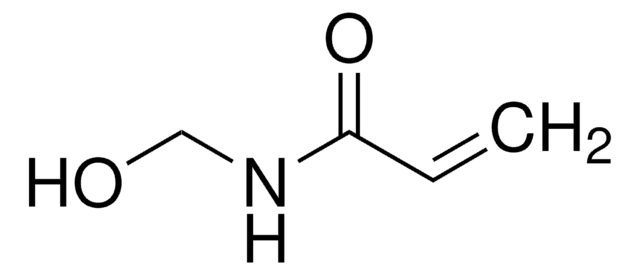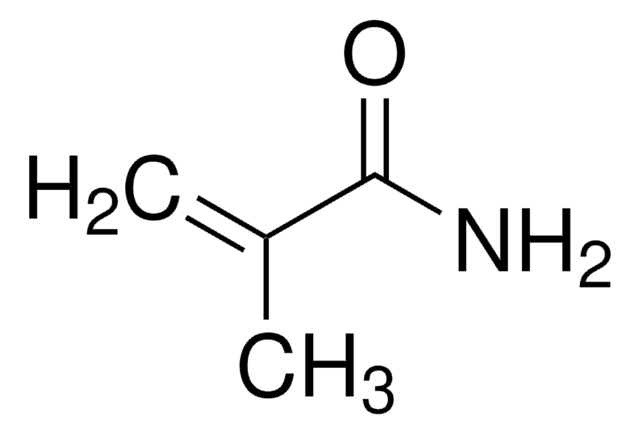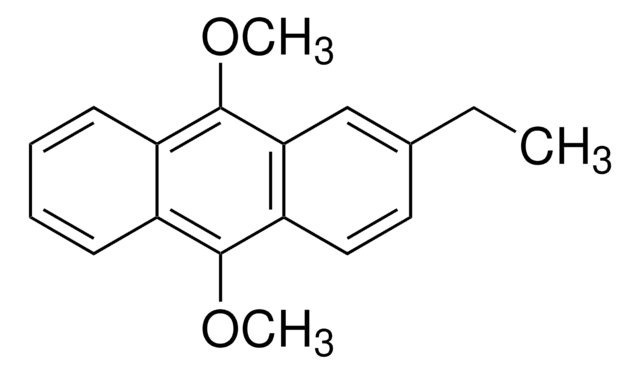773212
N,N-Diethylacrylamide
contains <200 ppm MEHQ as inhibitor, 99%
동의어(들):
N,N-Diethyl-2-propenamide, Acrylic acid diethylamide, DEAA, DEAAm, DEAM
로그인조직 및 계약 가격 보기
모든 사진(1)
About This Item
실험식(Hill 표기법):
C7H13NO
CAS Number:
Molecular Weight:
127.18
MDL number:
UNSPSC 코드:
12162002
PubChem Substance ID:
NACRES:
NA.23
추천 제품
Quality Level
분석
99%
양식
liquid
포함
<200 ppm MEHQ as inhibitor
refractive index
n20/D 1.468
density
0.924 at 25 °C
저장 온도
2-8°C
SMILES string
CCN(CC)C(=O)C=C
InChI
1S/C7H13NO/c1-4-7(9)8(5-2)6-3/h4H,1,5-6H2,2-3H3
InChI key
OVHHHVAVHBHXAK-UHFFFAOYSA-N
애플리케이션
Acrylamide monomer used to make polymers for drug delivery; thermal responsive polymers; and solutions with specifically tuned LCSTs.
신호어
Warning
유해 및 위험 성명서
Hazard Classifications
Acute Tox. 4 Oral - Eye Irrit. 2
Storage Class Code
10 - Combustible liquids
WGK
WGK 3
Flash Point (°F)
192.0 °F
Flash Point (°C)
88.89 °C
이미 열람한 고객
Nuran Işıklan et al.
Carbohydrate polymers, 218, 112-125 (2019-06-22)
Pectin based micro/nanocarriers display promising properties for biomedical applications. In this study, thermo/pH-responsive chitosan coated pectin-graft-poly(N,N-diethyl acrylamide) (Pec-g-PDEAAm/CS) microcarriers containing 5-Fluorouracil (5-FU) as a model drug were developed. The structure, thermal stability and surface morphology of 5-FU-loaded microcarriers were investigated
Wei Wei et al.
Colloids and surfaces. B, Biointerfaces, 136, 1182-1192 (2015-11-23)
Salecan is a water-soluble microbial polysaccharide produced by Agrobacterium sp. ZX09, a salt-tolerant strain isolated from a soil sample in our laboratory. Previous work inspired us salecan is a good candidate to fabricate hydrogels. Poly(N,N-diethylacrylamide) is one type of thermo
Xuemei Wu et al.
Sensors (Basel, Switzerland), 18(10) (2018-10-10)
In this work, binary hydrogel films based on carboxylated multi-walled carbon nanotubes/poly(N,N-diethylacrylamide) (c-MWCNTs/PDEA) were successfully polymerized and assembled on a glassy carbon (GC) electrode surface. The electroactive drug probes matrine and sophoridine in solution showed reversible thermal-, salt-, methanol- and
Z Ding et al.
Nature, 411(6833), 59-62 (2001-05-03)
Many medical and biotechnological processes rely on controlling and manipulating the molecular-recognition capabilities of proteins. This can be achieved using small molecules capable of competing for protein binding or by changing environmental parameters that affect protein structure and hence binding.
Okano, T.;
J. Controlled Release, 11, 255-265 (1990)
자사의 과학자팀은 생명 과학, 재료 과학, 화학 합성, 크로마토그래피, 분석 및 기타 많은 영역을 포함한 모든 과학 분야에 경험이 있습니다..
고객지원팀으로 연락바랍니다.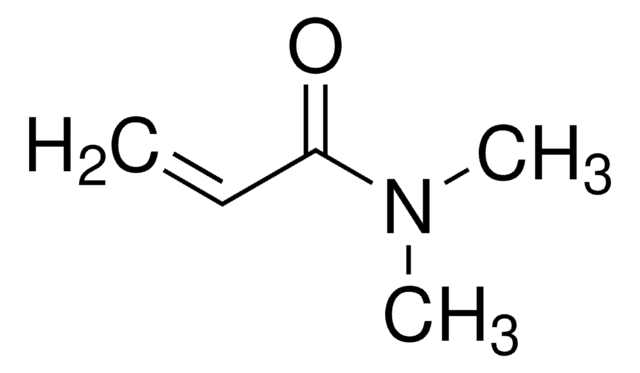




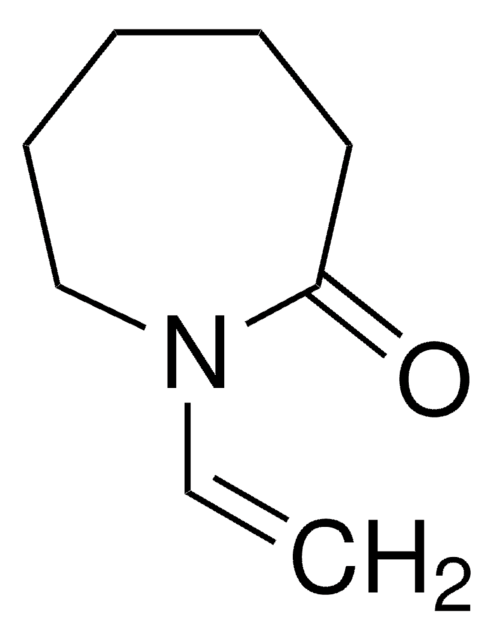
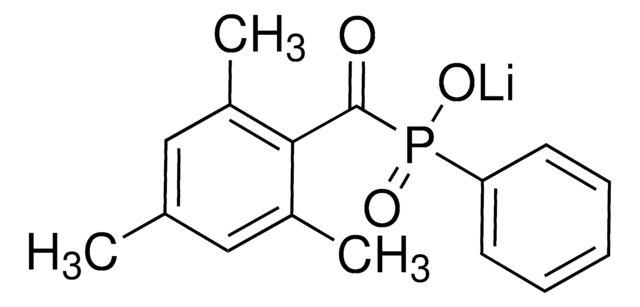
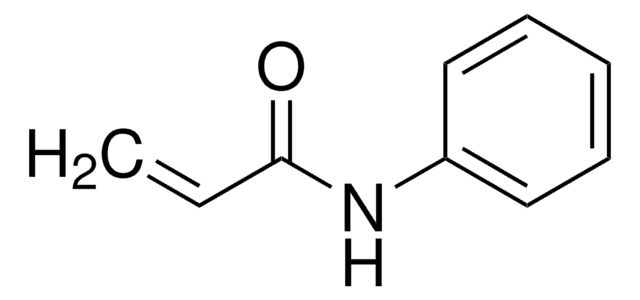

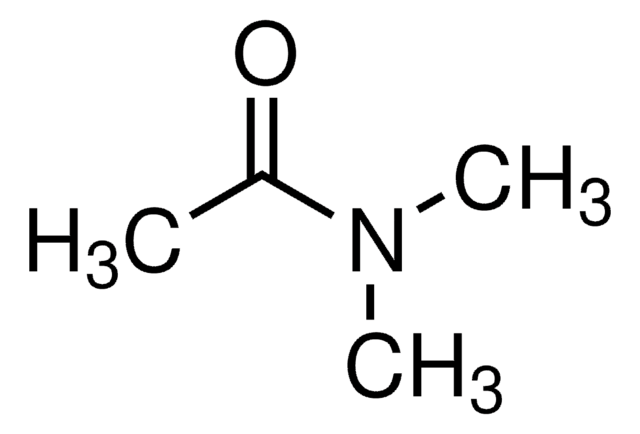

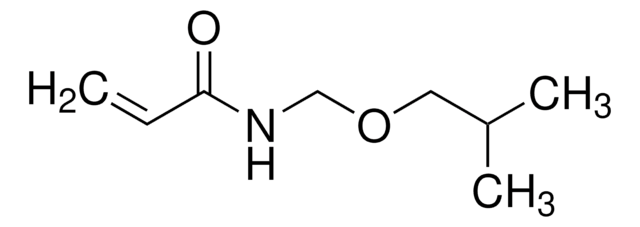
![N-[Tris(hydroxymethyl)methyl]acrylamide contains ≤7% KCl, 93%](/deepweb/assets/sigmaaldrich/product/structures/130/961/5bc6d1a4-a540-4496-9f46-74507af67e21/640/5bc6d1a4-a540-4496-9f46-74507af67e21.png)
